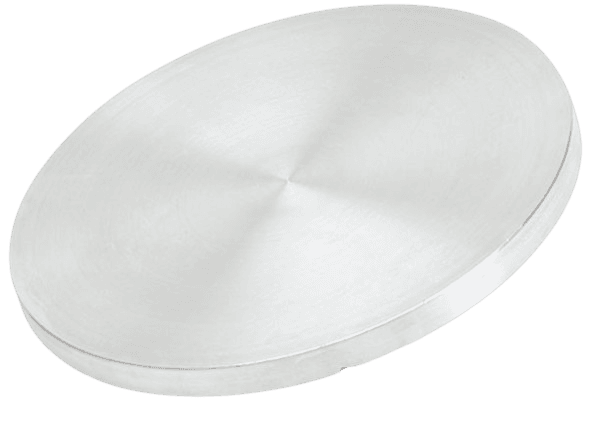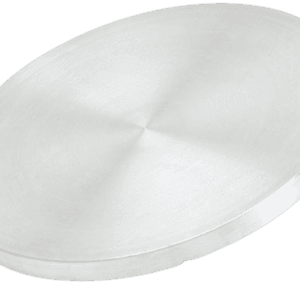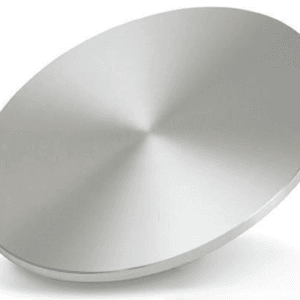Gadolinium Sputtering Target Description

Gadolinium Sputtering Target Specification
| Material Type | Gadolinium |
| Symbol | Gd |
| Color/Appearance | Silvery White, Metallic |
| Melting Point | 1,313 °C |
| Density | 7.9 g/cc |
| Thermal Conductivity | 11 W/m.K |
| Coefficient of Thermal Expansion | 9.4 x 10-6/K |
| Available Sizes | Dia.: 2.0″, 3.0″, 4.0″, 5.0″, 6.0″ Thick: 0.125″, 0.250″ |
We also offer other customized shapes and sizes of the sputtering targets; please Contact Us for more information.
Gadolinium Sputtering Target Application
- Gadolinium sputtering target is used for thin film deposition.
- Gadolinium can be used for making gadolinium yttrium garnets in superconducting and microwave applications.
- Gadolinium can also be used as a magnetic component for sensing both hot and cold variations.
- Gadolinium compounds are used for producing phosphors for color TV tubes. It is used as an alloying element for better workability and improved resistance to high-temperature oxidation in chromium, iron, and their associated alloys.
- Gadolinium ethyl sulfate has very low noise properties and can be used to mimic the performance of high-frequency amplifiers, like the maser.
Handling Notes
- Bonding services for gadolinium sputtering targets are currently unavailable.
- Due to its high chemical reactivity, gadolinium sputtering targets require oil packaging and thorough cleaning to prevent environmental reactions.
Get Contact
TFM offers Gadolinium ony Sputtering Targets in various forms, purities, sizes, and prices. We specialize in high-purity thin film deposition materials with optimal density and minimal grain sizes, which are ideal for semiconductor, CVD, and PVD applications in display and optics. Contact Us for current pricing on sputtering targets and other deposition materials that are not listed.


 MSDS File
MSDS File



Reviews
There are no reviews yet.